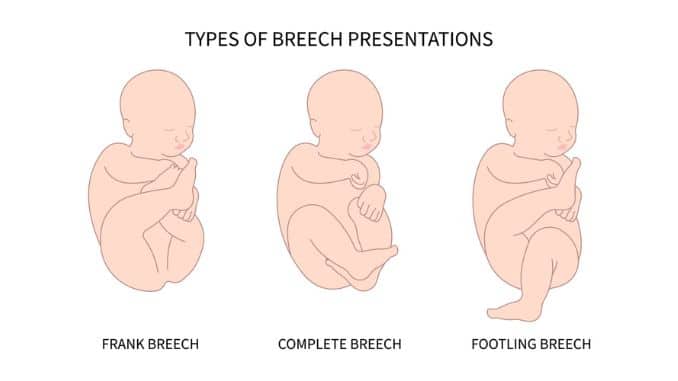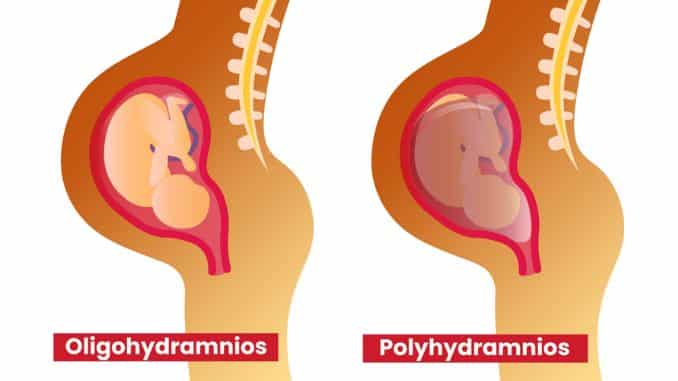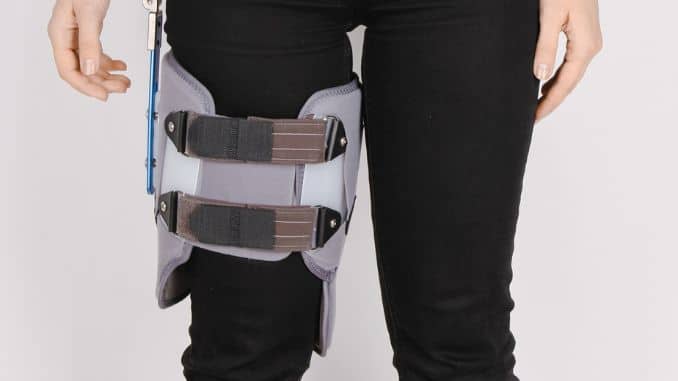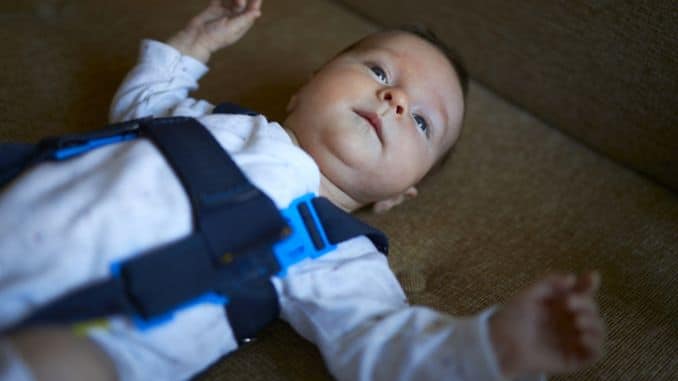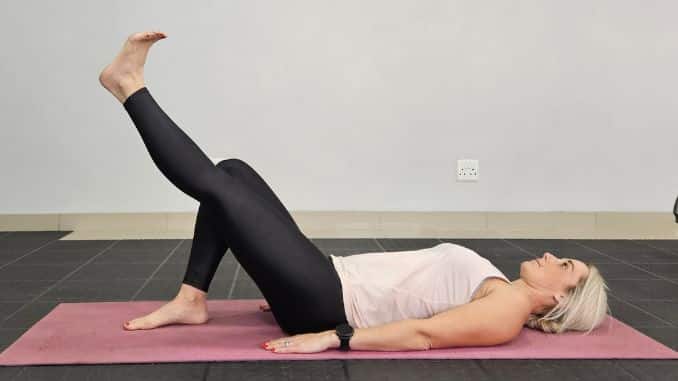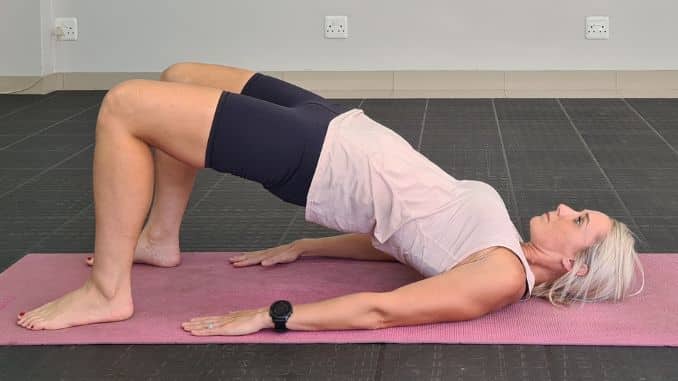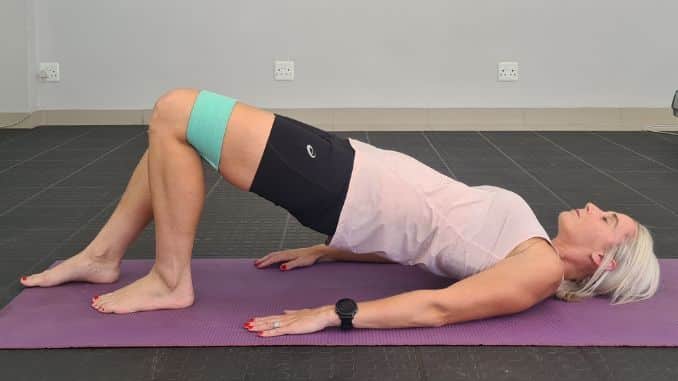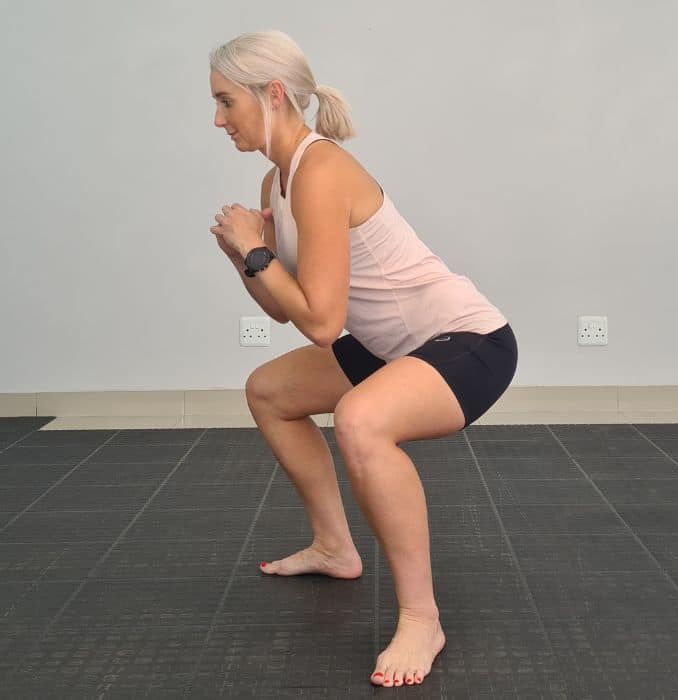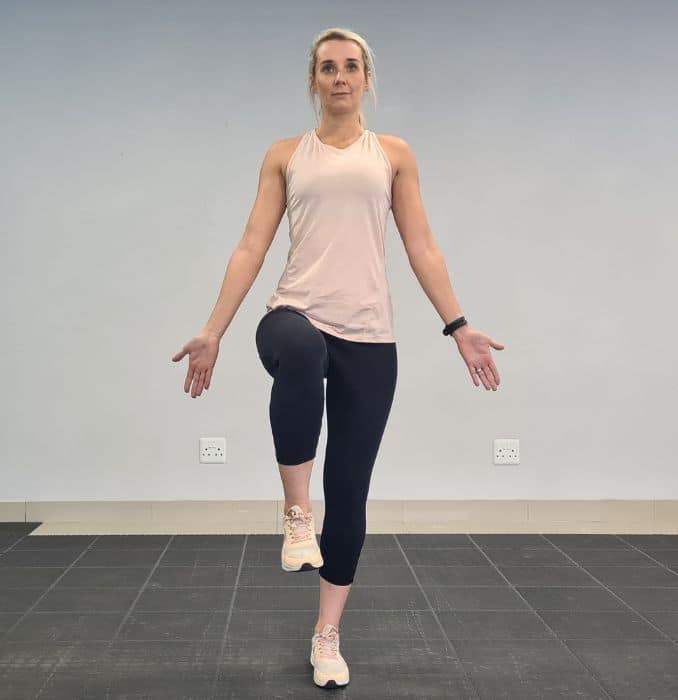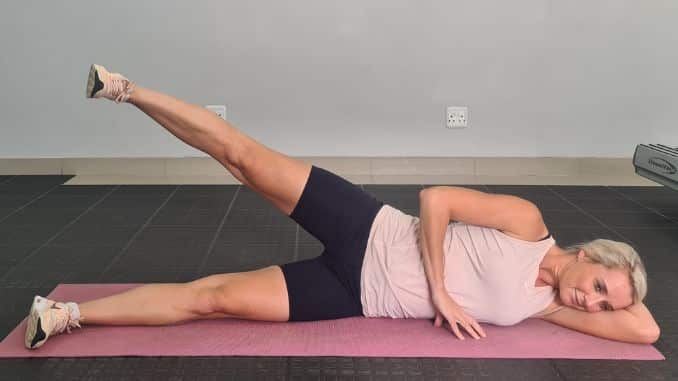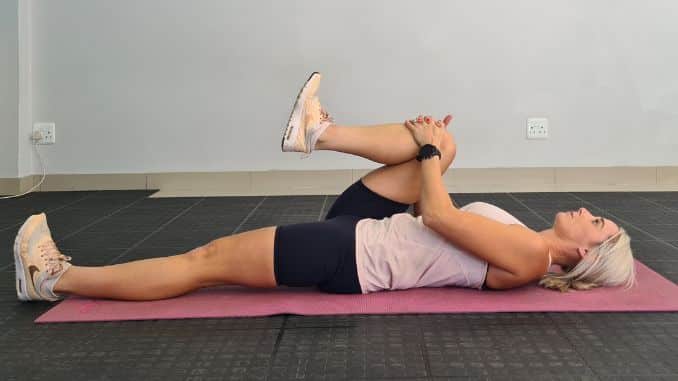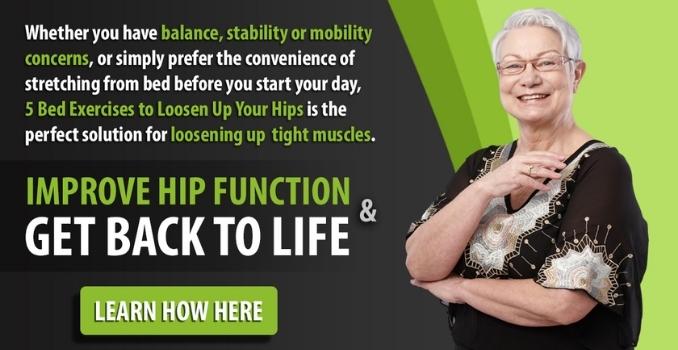
Hip dysplasia, also known as developmental dysplasia of the hip (DDH), is a condition in which the hip joint does not develop properly, leading to an abnormal relationship between the femur (thigh bone) and the acetabulum (hip socket). This can result in instability and misalignment, potentially leading to joint problems and pain over time. Read on to learn more about Hip Dysplasia Exercises.
Hip dysplasia can vary in severity, ranging from mild cases where the hip joint is slightly loose but stable to more severe cases where the femur is wholly or partially dislocated from the hip socket. It is more commonly seen in infants and young children, especially in the first few months of life, but it can also develop later in life due to various factors.
Factors contributing to hip dysplasia include genetic predisposition, breech positioning of the baby in the womb, family history of the condition, and certain environmental factors. Early diagnosis and intervention are crucial for effective treatment. Mild cases may resolve on their own as the child grows, while more severe cases may require interventions such as bracing, casting, or surgical procedures to correct the alignment of the hip joint.
In adults, hip dysplasia can also occur and may contribute to hip pain, early-onset arthritis, and reduced joint function. Treatment in adults may involve physical therapy, pain management, and in some cases, surgical intervention such as hip replacement surgery.
Regular check-ups with healthcare providers, especially during infancy, can help detect and manage hip dysplasia early, leading to better outcomes and improved quality of life.
Causes Of Hip Dysplasia
Hip dysplasia happens when your femur doesn’t fit correctly into your pelvis’s socket. You might develop dysplasia if your hip socket is too shallow or your femur’s top (head) is shaped differently than usual.
The exact causes of hip dysplasia are not always clear, but several factors can contribute to its development:
1. Genetics
There is often a genetic predisposition to hip dysplasia. The risk may be higher if a close family member, such as a parent or sibling, has had hip dysplasia or related conditions.
2. Breech Position
Babies positioned in a breech (buttocks-first) presentation in the womb are at a higher risk of hip dysplasia. The legs being extended and the hips not fully flexed can affect hip joint development.
3. Firstborn Or Multiple Births
Firstborn babies and those from multiple pregnancies (twins, triplets, etc.) have a slightly increased risk of hip dysplasia.
4. Female Gender
Girls are more commonly affected by hip dysplasia than boys. Hormonal factors might contribute to this gender difference.
5. Hormonal Factors
Hormonal changes during pregnancy can affect the ligaments around the hip joint and contribute to its instability which needs some pregnancy workout plan if possible.
6. Swaddling Practices
Incorrect swaddling practices, where the baby’s legs are tightly wrapped and straightened, can hinder normal hip development.
7. Reduced Amniotic Fluid
Insufficient amniotic fluid in the womb can limit the baby’s movement and lead to hip dysplasia.
8. Family History
A family history of musculoskeletal or connective tissue disorders may increase the risk of hip dysplasia.
9. Environmental Factors
Certain environmental factors during pregnancy, such as maternal smoking or drug use, might contribute.
10. Oligohydramnios
A condition with a reduced amount of amniotic fluid around the baby in the womb.
Hip Dysplasia Symptoms
- Hip pain (usually in the front of your groin).
- Feeling like your hip is loose or unstable.
- Limping when you walk or move.
- Having legs that are different lengths.
Treatment And Management
The treatment for hip dysplasia depends on the severity of the condition and the patient’s age. Treatment aims to ensure proper hip joint development, stability, and function.
Here are the common approaches to treating hip dysplasia:
-
Wearing A Brace
Babies may need a brace or harness that holds their hips in place. This will keep their joints in proper alignment while their body grows and develops. Bracing is usually all your child will need to correct dysplasia, especially if they start treatment when they’re younger than 6 months old. Most babies need to wear a brace for a few months.
-
Pavlik Harness
This is a specialized harness for babies with hip dysplasia. It helps to keep the hips flexed and abducted (spread apart), allowing for proper hip joint alignment. The harness is worn continuously and is adjusted as needed by a healthcare professional.
-
Spica Cast
A spica cast may be used in more severe cases or if the Pavlik harness is ineffective. This involves placing the baby’s legs in a cast that holds the hips correctly. The cast is changed periodically as the baby grows.
-
Physical Therapy
A physical therapist will give you stretches and exercises to improve your flexibility and strengthen the muscles around your hip joint.
-
Hip Dysplasia Surgery
The most common procedures to repair hip dysplasia are hip osteotomy and hip arthroscopies. Osteotomy is surgery to realign and reshape your bones. A hip arthroscopy is a minimally invasive technique to repair damage inside your hip joint. People with severe hip dysplasia and arthritis might need a hip replacement (arthroplasty). Your surgeon will tell you which type of surgery you (or your child) will need and what to expect.
-
Physical Therapy
Physical therapy may be recommended to help improve muscle strength and joint stability around the hip joint. This can be especially important during and after treatment with devices like harnesses or casts.
Hip Dysplasia Exercises
These Hip Dysplasia Exercises can support managing hip dysplasia, particularly for individuals who have mild cases or are recovering from treatment. However, it’s essential to consult with a healthcare professional or physical therapist before starting any exercise program to ensure that the exercises are safe and appropriate for your specific situation.
Here are some exercises that may be beneficial for individuals with hip dysplasia:
I. Range Of Motion Exercises
Gentle range of motion exercises can help maintain flexibility and mobility in the hip joint.
These may include:
1. Hip Circles
While lying on your back, slowly move your legs in circular motions to gently rotate the hip joint.
II. Strengthening Exercises
Strengthening the muscles around the hip joint can provide better support and stability.
Focus on exercises that target the hip abductors, adductors, and gluteal muscles:
1. Clamshells
Lie on your side with your knees bent. Then, keeping your feet touching, lift your top knee while keeping your feet together.
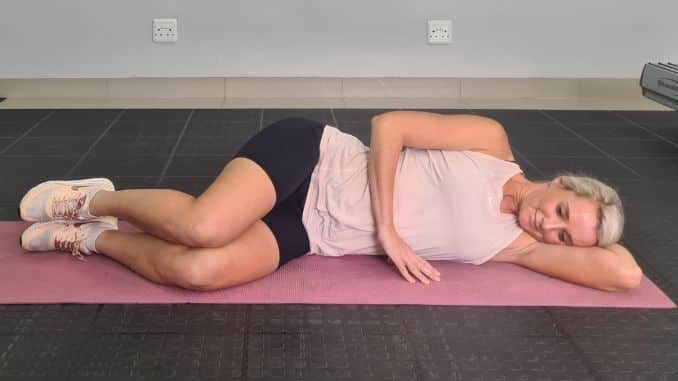 |
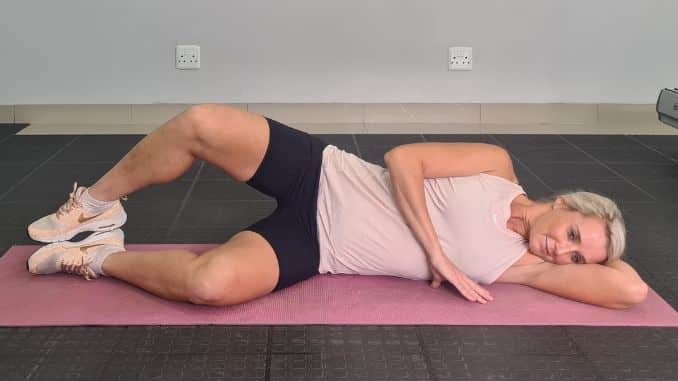 |
2. Side Leg Raises
Lie on your side and lift your top leg while keeping it straight. Then, lower it back down and repeat.
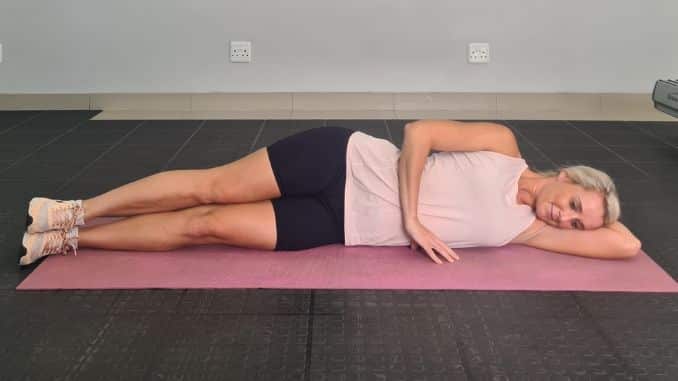 |
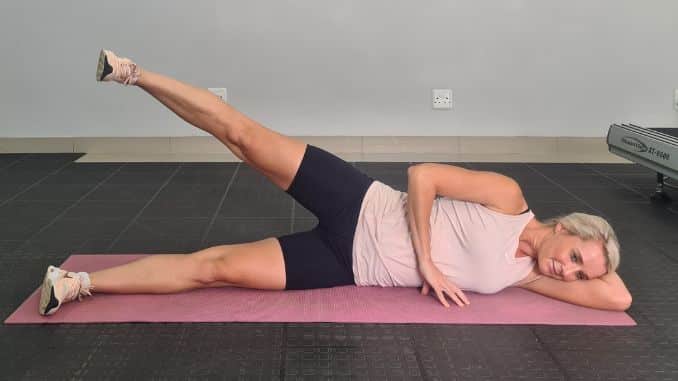 |
3. Standing Hip Abduction
Firstly, loop one end of a resistance band around a sturdy object and the other end around your ankle. Secondly, stand tall with the looped ankle farthest from the opposite end of the band while holding the sturdy object with your inside arm. Then, lift your outer leg up and straight out to the side as far as possible. Pause, then return your leg to the starting position.
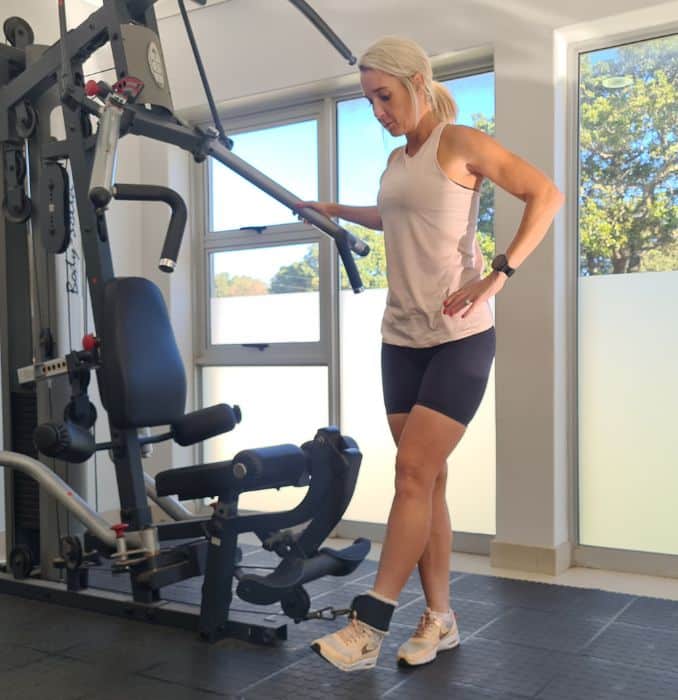 |
 |
4. Bridges
For this Hip Dysplasia Exercises, lie on your back with your knees bent and feet flat on the floor. Lift your hips off the ground while squeezing your glutes.
5. Isometric Gluteus Medius Activation With Step Stance Bridge
Lying on your back, knees bent, place the foot of the leg you want to work closer to your bottom and the other foot slightly forward so you are in a step stance. Then, belt around knees, and gently squeeze, activating gluteus medius. Afterward, slowly push through your heels, raising your pelvis towards the ceiling to keep the hip bones level. Hold 5 secs. Finally, maintain the activation out into the belt throughout this Hip Dysplasia Exercises on the way up and down through the movement.
6. Squats
Perform squats while focusing on proper form and alignment. Use a chair for support if needed.
Low-Impact Cardio
Engaging in low-impact cardiovascular exercises, such as swimming or stationary biking, can help improve overall fitness without putting excessive stress on the hip joints.
III. Balance And Stability Exercises
Improving balance and stability can help prevent falls and promote better hip joint function.
Try exercises such as:
1. Single-Leg Balance
Stand on one leg while maintaining your balance. Then, hold onto a stable surface if needed.
2. Tai Chi
This gentle exercise focuses on balance, flexibility, and coordination.
IV. Stretching
Gentle stretching can help maintain hip flexibility and reduce muscle tightness. Focus on stretches that target the hip muscles, hamstrings, and quadriceps.
1. Hip Abduction
Hip abduction exercises involve lifting the leg away from the body. This strengthens the muscles that act on the hip to provide greater stability and strength. Wrap a resistance band around your ankles and point your right foot to the side. Then, slowly lift your leg to your side as high as you can without pain; do not push to the point of muscle strain. Hold for three to five seconds, then lower the leg. Repeat 10 times, then lower to rest for 30 seconds. Lastly, switch to your opposite leg and repeat the exercise.
2. Lying Hip Stretch
Firstly, lie on your back with your legs extended. Secondly, gently pull your knee toward your torso, wrapping your arms around your knee for support. Then, try to keep the left leg as straight as possible. Afterward, hold this stretch for 15 to 30 seconds, then release the knee. Lastly, repeat by pulling your left leg toward your chest. Complete the exercise by repeating it three times on each leg.
Moreover, remember to start slowly and gradually increase the intensity and duration of your exercises. If any exercise causes pain or discomfort, stop immediately and consult your healthcare provider. Also, working with a physical therapist who can create a customized exercise plan tailored to your specific needs and limitations is important.
Outlook
The outlook for hip dysplasia varies depending on several factors, including the severity of the condition, the age at which it is diagnosed and treated, the effectiveness of treatment, and the individual’s overall health.
Here are some key points to consider regarding the outlook for hip dysplasia:
-
Early Detection And Treatment
The prognosis is generally better when hip dysplasia is detected and treated early, especially during infancy. Timely interventions, such as harnesses, braces, or casting, can often lead to successful outcomes and proper hip joint development.
-
Severity Of Dysplasia
The severity of the hip dysplasia plays a significant role in the outlook. Mild cases detected early and respond well to treatment may also result in normal hip joint development and function. More severe cases require more intensive treatment and potentially have a longer-lasting impact on hip function.
-
Age At Diagnosis
The age at which hip dysplasia is diagnosed and treated can influence the outlook. Infants and young children have a greater potential for natural hip joint remodeling, while older children and adults may have more established joint abnormalities that could require more complex treatments.
-
Treatment Effectiveness
The success of treatment measures, such as harnesses, braces, casting, or surgical procedures, significantly impacts the outlook. Properly managed treatment can often lead to improved hip joint alignment and function.
-
Physical Therapy And Rehabilitation
Engaging in physical therapy and rehabilitation exercises can enhance the outlook by promoting muscle strength, joint stability, and overall mobility. Consistent participation in prescribed exercises can contribute to better hip joint function.
-
Long-Term Follow-Up
Regular follow-up appointments and monitoring are essential, especially for children with hip dysplasia. Continued observation and adjustments to the treatment plan can contribute to a more positive outcome if needed.
-
Individual Factors
Each person’s response to treatment and ability to adapt to any residual hip joint changes can vary. Some individuals may have minimal long-term effects, while others might experience lingering hip-related issues.
-
Complications And Future Needs
Hip dysplasia can sometimes lead to complications such as early-onset arthritis or hip pain later in life. This can affect an individual’s activity level and quality of life. Surgical interventions, such as hip replacement surgery, might be necessary in severe cases.
It’s important to emphasize that early detection, proper diagnosis, and appropriate treatment are crucial for achieving the best possible outcomes for hip dysplasia. If you or your child has been diagnosed with hip dysplasia, working closely with a healthcare team, including pediatricians, orthopedic specialists, and physical therapists, can help certainly ensure the most favorable prognosis and long-term hip joint health.
Whether you have balance, stability, or mobility concerns, or simply prefer the convenience of stretching from bed before you start your day, 5 Bed Exercises to Loosen Up Your Hips is the perfect solution for loosening up those tight muscles.

